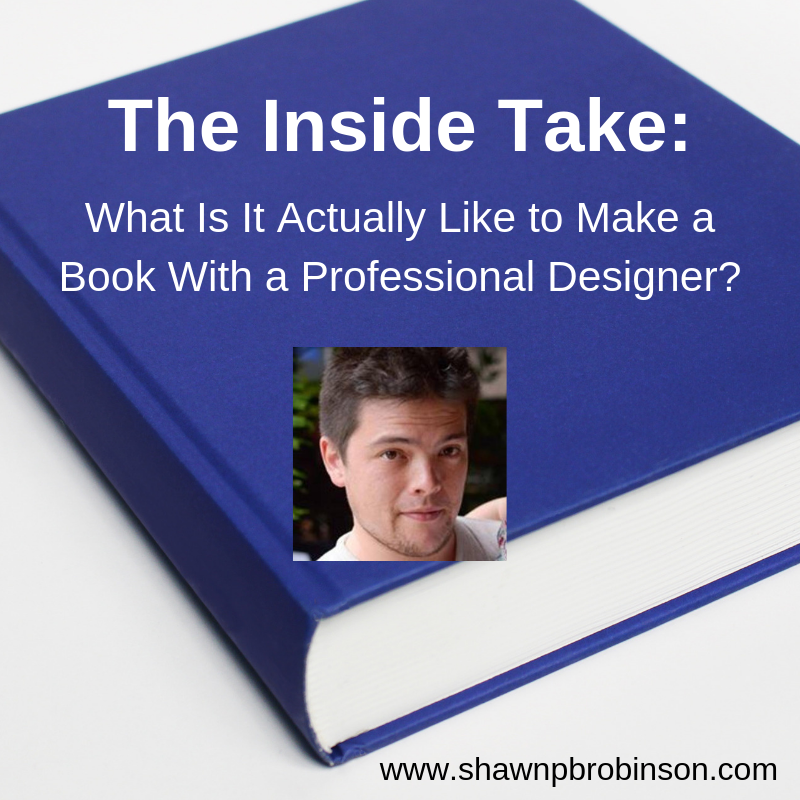Hey everyone, today we have a guest post from Martin Cavannagh. Martin is part of the team at Reedsy and is going to share a bit of his expertise with us!
What Is It Actually Like to Make a Book With a Professional Designer?
Working with a professional cover designer is like hiring a contractor to refurbish your kitchen: the more you know about how the work is done, the easier it will be to communicate your needs – and the better you will understand where you fit into the process, particularly if you’re self-publishing a book.
That said, the process that freelance designers use when working with independent authors is not that different from how they work with traditional publishers! At its core, it revolves around multiple rounds of designs and refinements, during which the publisher or author will need to voice their opinion.
In this post, we’ve broken the process of working with a cover designer into three rough stages.
Stage 1: The First Concept Round
In the initial concept stage, the designer will usually submit a variety of broad concepts. According to our poll of book cover designers on the Reedsy network, most standard proposals include between three and five initial concepts for the client to choose from.
The author might be torn between a number of covers that they really like, at which point they might ask their friends for an opinion. Some authors will even share the concepts with their social media following before pulling the trigger on a design.

(Tudor Monarchs by Andrea Clarke, cover designs by Ben Anslow)
It’s important, at this stage, to be honest with your designer. If you’re not happy with any of the covers, a quick conversation can help you hone in on why those concepts didn’t work and allow your designer to return with ideas closer to what you had in mind. (You don’t want to keep going with a cover design that depicts a lot of bees when you had requested a “beast,” after all!)
Stage 2: Iterations
Once you decide on a concept, the next step is to refine that design and polish it into a final book cover design. Some designers will provide you with variations on the original concept so that you can see how the cover will look with other fonts – or, perhaps, with a slightly different color and layout, as in the example below.

(Life in the Loop by Matt Bieber, cover designs by Jason Anscomb)
In our poll, the majority of Reedsy professionals said their standard offers account for two to four rounds of iterations once the concept is chosen. After that, you can still ask for changes – but if they are significant, expect to compensate the designer for the extra time, which is something to keep in mind for any author who’s planning to self-publish on a budget.
Stage 3: Delivering the right formats
Most self-publishing authors, especially in fiction, only need a front cover for the ebook. (If you’re publishing on Amazon, it will generally convert the file to MOBI for you.)
However, if your intention is to also sell paperback and hardback copies, you will require a cohesive design for your spine and back cover.
Print-on-demand (POD) services offer dozens of formats, each of which will have unique dimensions. With each of these formats, the width of the spine will also vary, depending on the precise page count: the longer the book, the wider the spine. Each POD service will also have separate guidelines for submission, which complicates matters further!
Here’s the good news: designers with a traditional publishing background generally have dealt with clients who require a full range of formats. When working with self-publishers, who often only require an ebook cover, they tend to reduce their quote to reflect the work required – hence the difference in price between web-only and print covers.
Some more details for the budget-conscious folks out there: some designers are happy to include print layouts as part of their package, but if you’re certain that you only need an ebook-only cover, they will often reduce their quotes by 20-30%. Equally, freelancers who offer quotes for just a front cover may add another 25-50% if additional formats are needed.
On a last note, the secret of working with a designer comes down to communication. The better you can communicate the tone, the aesthetic, or the target audience of your book, the sooner you and your designer can get on the same page and create a cover you can both be proud of.
 Martin Cavannagh is a writer and a member of the team at Reedsy. The world’s largest marketplace of experienced publishing professionals, Reedsy has helped thousands of authors create great books with the help of top editors, marketers and, of course, book designers.
Martin Cavannagh is a writer and a member of the team at Reedsy. The world’s largest marketplace of experienced publishing professionals, Reedsy has helped thousands of authors create great books with the help of top editors, marketers and, of course, book designers.
